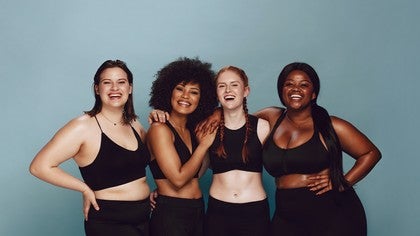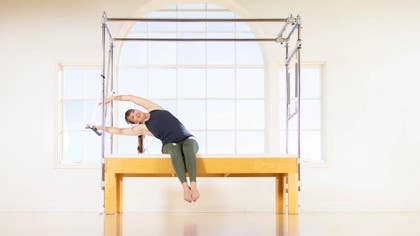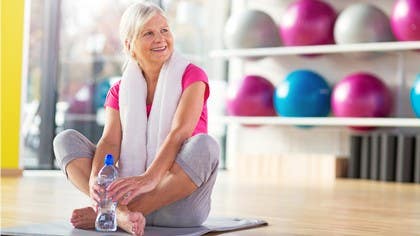
What to Wear for Your First Pilates Workout
Depending upon where you live in the world, studios and gyms are opening up again. If you are venturing into a Pilates class in person for the first time in a long time, or the first time in real life, ever, you may be rusty on what to wear for the best workout. Fear not! We’ve talked to some Pilates instructors and studio owners about what to wear, and what not to wear, for your next Pilates workout.
“During the pandemic, teaching over Zoom, it was great to get to see everyone’s pajamas,” says Misty Lynne Cauthen, a Murrysville, Pennsylvania-based Pilates instructor and the owner of Dragonfly Pilates. With her students back in the studio, she’s reminded of some of the “horrors I never want to see again” that have surfaced over the course of her long career. These include the exhibitionists in tight white shorts with a penchant for setting up in the front row of class, directly in front of the mirror, as well as male students who neglect to wear the proper undergarments, perhaps not realizing the effect of gravity on their pant legs during inversions.
Jared Kaplan, a New York City-based Pilates instructor, personal trainer, and founder of Studio 26, agrees. “That’s a glimpse no teacher wants to see,” he says. His advice for male or male-identifying clients? “Keep it wrapped.”
Adds Joanne Bezzina, a Sydney, Australia-based Pilates instructor, “Your favourite tights can thin as they age. Add Roll Overs to the mix and you might be giving away more than you realise.” The solution? Choose tights or leggings from well-regarded brands that won’t become see-through before their time.
“Higher waistbands are your best friend for exercises like the Roll Back on the cadillac/trapeze table or Stomach Massage on the Reformer. No one likes losing their pants,” adds Bezzina.
Avoiding Distractions
Not only can it lead to the sartorial form of “TMI” (too much information), but choosing the wrong clothing is a distraction for both teacher and student. Cauthen asks new clients to refrain from wearing stripes or patterns at their early sessions, because stripes tend to shrink crookedly in the wash and challenge the teacher’s ability to spot all-important imbalances in the body.
It’s hard to focus on your own form if you’re yanking on your bra straps or moving your jewelry out of the way. “There’s enough to focus on physically without having to worry about mobility restrictions from ill-fitting clothing,” says Kaplan. “There are tons of great apparel companies working with innovative stretch fabrics out there. Find the ones that make you feel great.”
While Pilates isn’t as much of a sweat fest as some other types of exercise, when done properly, Pilates will give you a pretty serious glow. The reputation persists, however, which is why some of Cauthen’s students come “dressed to the nines,” planning to go straight from their workouts to dinner or some other fabulous destination. That often includes jewelry more suited to the catwalk than the Cadillac.
“Statement necklaces can knock you in the teeth or get tangled up in earrings or the Reformer springs,” says Cauthen, who adds, “If you don’t want to listen, you’ll learn the hard way.”
“Keep your metal off our machines.”
Not only is it dangerous to your dental work, jewelry is not great for the very expensive equipment in a Pilates studio. Among Kaplan’s pet peeves are bracelets, earrings, and necklaces. “They’ve ripped many holes in our upholstery,” he says, adding, “Please keep your metal off our machines.”
Back zippers are Kaplan’s worst nightmare, as they are even more detrimental to Reformer upholstery. Bezzina concurs. “As well as potentially putting a hole in your mat or damaging our equipment, they can make rolling exercises like Rolling Like a Ball or Seal tricky,” she says. Ouch!
Love Your Body
Every new client who calls Cauthen’s studio asks what to wear because they don’t want to stand out. Some of them may not have entered a gym or studio since the heyday of Jane Fonda’s workout. Their trepidation is understandable. A Pilates studio can be an intimidating environment. The movements are unfamiliar, and the equipment looks scary (cue the jokes about torture chambers and S&M dungeons here). In response, Cauthen suggests simply wearing clothing that is comfortable and that allows you to move without restriction or concern.
Cauthen has worked clients ranging from professional dancers with the Pittsburgh Ballet Theatre to seniors, and she can attest that everyone has some quirk or foible, some self-assessed “problem area” that he or she doesn’t feel great about. Her advice? Let it go. “The minute you release it, it loses power over you,” she says.
Kaplan agrees. “No one but you should really care that much about what you’re wearing. If they do, ask yourself why you care so much about what they think,” he says. His advice? “Wear what you feel great in, and the rest will flow from there. Dress for who you want to be: it’ll help you find your confidence, comfort, or sparkle--whatever it is you’re looking to develop.”
What’s your go-to getup for Pilates? Let us know in the comments below.
Comments
You need to be a subscriber to post a comment.
Please Log In or Create an Account to start your free trial.

















